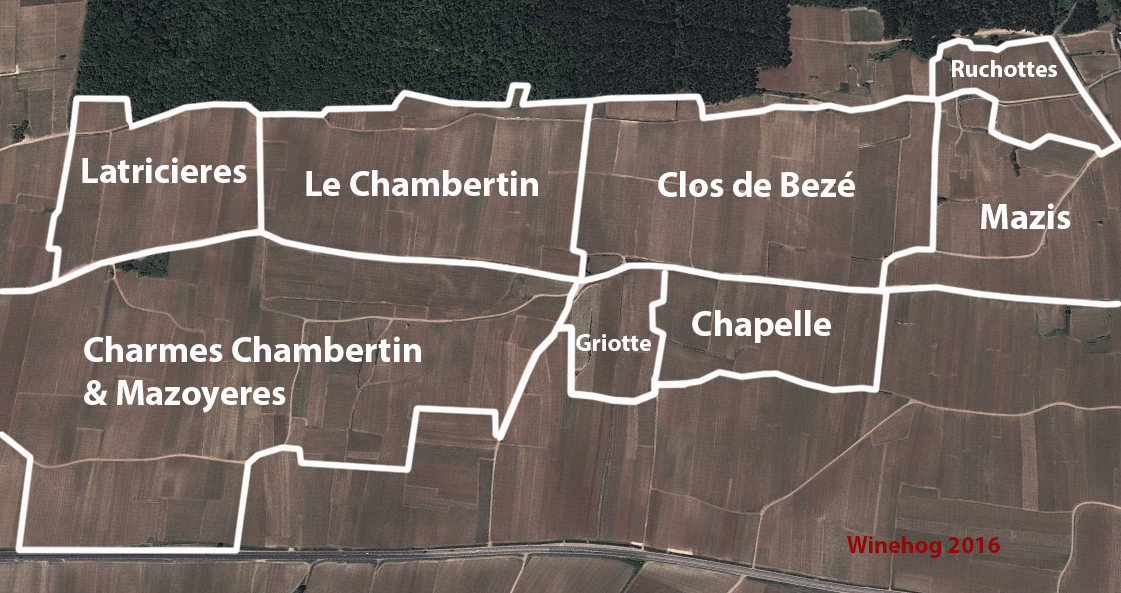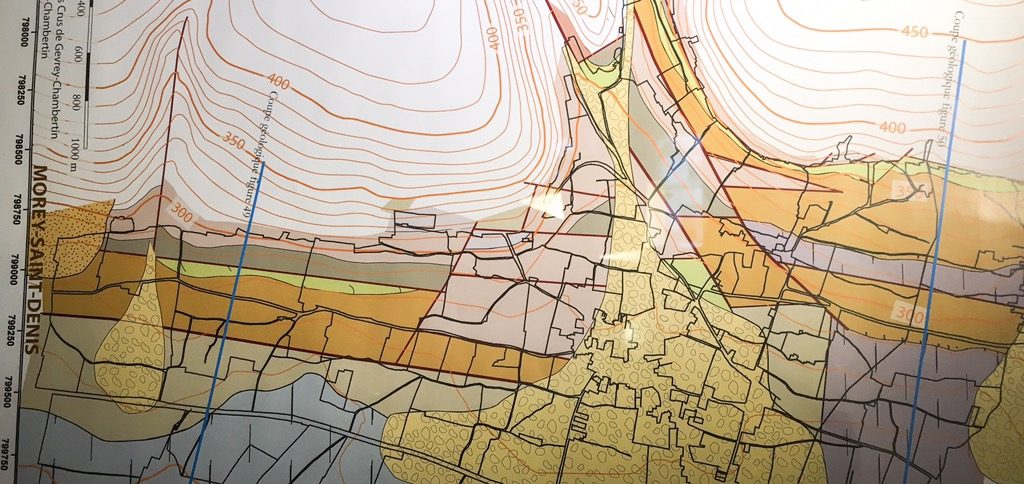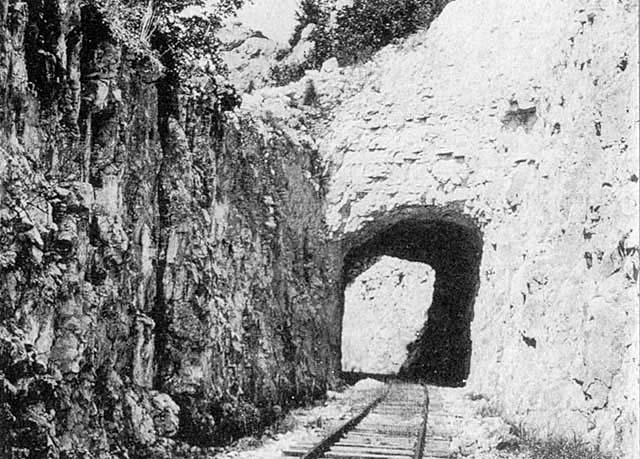While Chambertin is certainly the top wine of Domaine Trapet’s range, its Latricières-Chambertin also has a special place in my Burgundy-loving heart.
Latricières is perhaps the most accommodating of the grands crus to rising summer temperatures. Still, it does need both patience and plenty of time, as it is among the coolest and most backward of Gevrey-Chambertin’s top wines.
Latriceres in perspective
The Gevrey-Chambertin appellation is large, and it received with a significant number of sizeable grands crus when the current vineyard classification was established in the 1930s. While not all plots of Gevrey grands crus are equal, they are still famous in the Burgundy world and beyond, where names like Charmes-Chambertin and Mazis-Chambertin have a great reputation – in some cases justifiably so; in others, not so much.
A vineyard like Latricières-Chambertin is much more under the radar, however, despite producing some of the most refined and elegant wines of the appellation. For one thing, Latricières lacks the “Rousseau effect,” as it’s not in the line-up of this great producer who has created a lot of publicity for and awareness of the Gevrey appellation.
Latricierès-Chambertin – the cool cru
Chambertin and Chambertin Clos de Beze are the undisputed top vineyards of Gevrey. In my view, Latricières-Chambertin belongs in the second tier behind the two giants, along with Ruchottes-Chambertin. These vineyards are among the westernmost, highest-elevation appellations of Gevrey-Chambertin if one looks at the map. And while Charmes, Mazis can produce magnificent wines, the quality of these terroirs seems less homogeneous.
Latricières-Chambertin is the southern neighbour of the mighty Chambertin at the top of the Gevrey slope. It continues from Chambertin south towards Gevrey Aux Combottes (1er cru) and the northern end of Clos de la Roche (see map below).

It’s a rather cool area. In hot years the forest and the small valley – combe – found just above Latricières helps cool it down.
While the vineyard appears homogeneous, the geology in fact is rather complex: the Grisard Combe above Latriciéres is hidden by the forest, yet extends geologically down into the vineyard, creating large variations in the soil with its alluvial fan, seen on the map below as the yellow “trumpet” opening down.

Aside from the alluvial fan, the geology of Latricieres resembles that of Chambertin and Clos de Beze; i.e. it is a continuation of those vineyards in a geological sense.
So it is not homogeneous geologically speaking. But that being said, not many Burgundy vineyards are. What that means is, depending on the location of a parcel in the Latricières vineyard, the wine’s expression will be somewhat different.
Finally, the Combe de Grisard does help cool the vineyard, and this cooler tendency separates Latricières style-wise from hotter climats like Chapelle-Chambertin.

The current owners of Latricières
There are, according to my research, 12 current owners of Latricières-Chambertin. Domaine Camus is the largest, with 1.5 ha in the southern end of the vineyard.
I have identified the following owners:
- Domaine Camus, 1.511 ha
- Domaine Faiveley, 1.207 ha
- Domaine Trapet, 0.764 ha
- Domaine Rossignol-Trapet, 0.734 ha
- Domaine Drouhin-Laroze, 0.675 ha
- Domaine Leroy, 0.5715 ha
- Domaine Arnoux-Lachaux, 0.530 ha
- Domaine Simon-Bize, 0.319 ha
- Domaine Louis Remy, 0.310 ha
- Domaine Duroché, 0.276 ha
- Francois Feuillet, 0.271 ha
- Domaine Launay-Horiot, 0.168 ha
You need to login as a Premium subscriber to read the rest of this article. If you are not a Premium Subscriber, use the subscribe function and sign-up.

 - A true vin d’émotion – a Burgundy of passion
- A true vin d’émotion – a Burgundy of passion - A truly hedonistic wine – lively and enjoyable
- A truly hedonistic wine – lively and enjoyable - A vivacious wine for pure indulgance
- A vivacious wine for pure indulgance - A potential vin d´émotion - frais et léger
- A potential vin d´émotion - frais et léger